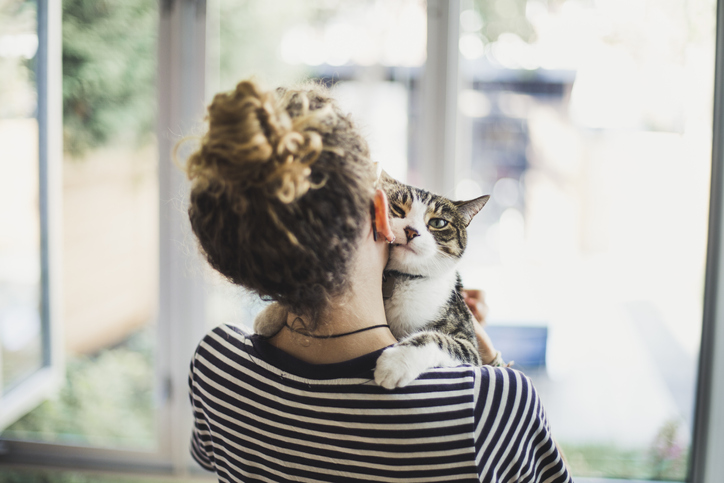Recently, a lot of media attention has been focused on the increased risk of catching an infectious disease from your pets if you allow them to sleep on your bed. The media reports were based on recommendations from a study soon to be published in the Centers for Disease Control and Prevention’s Emerging Infectious Diseases. The study authors, both experts in zoonoses (diseases or infections transmitted between animals and humans), reported that “the risk for transmission of zoonotic agents by close contact between pets and their owners through bed sharing, kissing, or licking is real”. The authors point out that the risks are rare, but want to raise awareness that there are risks, especially for young children or immunocompromised adults.
According to the authors, 53 percent of dog owners consider their dog to be a family member, and 56 percent of those dog owners (or 29 percent of all surveyed dog owners) sleep with their dog next to them on the bed. This includes all sizes of dogs, from small to large. The number of cats who sleep with their owner is reportedly even greater.
In our busy modern world, sharing our resting hours with our pets is a source of psychological comfort. Medical studies going back at least 30 years have documented the clinical value of pets for cardiac patients, patients hospitalized with mental illnesses, and elderly people. The CDC reports that pets may lower blood pressure, reduce cholesterol and triglyceride levels, and decrease feelings of loneliness, while increasing opportunities for exercise, outdoor activities and socialization.
Several things can be done to reduce the risk of catching a disease from your pet. Many of the diseases that a pet can pass on to a human can be identified and eliminated by regular veterinary care. Therefore, one of the most important things you can do is to ensure that your pet is given regular professional checkups by your veterinarian and that you follow your veterinarian’s recommendations for treatment of parasites such as fleas and worms.
A common sense approach to good hygiene will lessen your risk of catching a zoonotic disease from your pets, just as good hygiene helps reduce the chance that you will catch an infectious disease from another person. Follow good sanitation practices such as washing your hands with soap and water after ‘stooping and scooping’, cleaning litter boxes, or handling your pet’s food and water dishes. Avoid kissing your pets. If your pet licks you, especially on a skin wound or cut, wash the area well with soap and water.
Remember that we face many dangers on a daily basis, and for most of us, the risks of catching something from our pets is far outweighed by the joy and companionship that they give to us.
——————————————————————————–
Caution: These news items, written by Lifelearn Inc., are licensed to this practice for the personal use of our clients. Any copying, printing or further distribution is prohibited without the express written permission of Lifelearn Inc. Please note that the news information presented here is NOT a substitute for a proper consultation and/or clinical examination of your pet by our clinic veterinarian.

